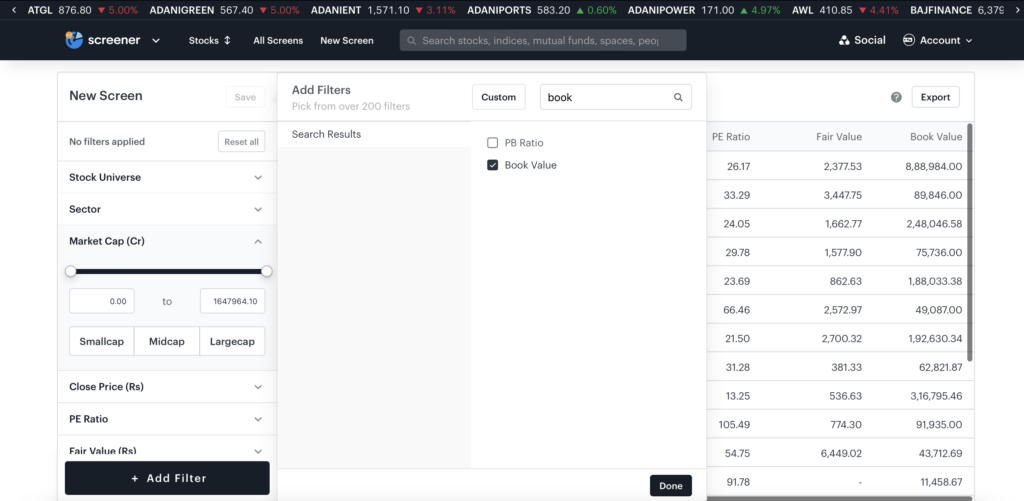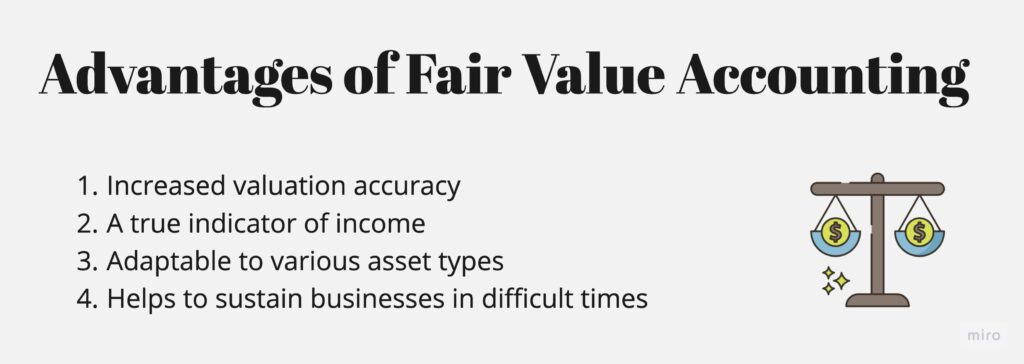Various factors and methods can determine the value of an asset. Also, different accounting methods may treat assets differently. And while dealing with assets like equities and mutual funds, you must have come across the term ‘fair value.’
But what is fair value? Is it the same as the market value? Can fair value vary from book value? We answer all your questions below!
You will Learn About:
What is fair value?

The intrinsic value of any security or asset is defined as its fair value.
It is the price at which both buyers and sellers are willing to exchange the asset freely, without any conditions. The determining factors behind the fair value of the asset or investment include the expected earnings from the asset, the cost of asset replacement, and more.
Fair value estimates are generally used to report assets like derivatives, goodwill, non-public entities, securities, etc. The market dynamics determine the fair value of securities/shares on the stock exchange.
Use Tickertape to find the fair value of a company. Go to ‘Stock Screener‘ and select ‘Fair Value’ under ‘Add Filters’. You can also use 200+ filters to analyse a company better.
Fair Value – Main Highlights
- The fair value of an asset is the estimate of the price at which the buyers and sellers are expected to exchange it.
- The fair value varies based on market conditions and determines the worth of the asset.
- Fair value is different from market value and carrying value.
- Its formula uses the current value of the asset, total dividends that an investor will earn, the rate of interest charged by the broker, and the number of days remaining in the futures contract to calculate fair value.
Fair value vs market value
The fair value measures the intrinsic worth of an asset. Several factors affect its calculation. On the other hand, market value is determined by demand and supply forces. Also, market value changes more often than fair value.
The following table mentions the key differences between fair value and market value:
| Fair value | Market value |
| Fair value is based only on the true value and is not impacted by demand and supply. This is why it is extensively used in accounting. | Market value is decided only after the buyer and seller meet. The price is determined after negotiation and may not always be based on logic. |
| While calculating the fair value of an asset, adjustments are made for impairment. This helps determine the true value of the asset. | Market value is not the right way to determine the true value of an asset. This is because it depends heavily on demand and supply, which constantly change. |
| Fair value is fundamentally derived. Thus, the fair value calculation model is used for the fundamental valuation of an organisation or asset. | Market value is solely based on market conditions and cannot accurately represent the asset’s value. |
Fair value vs carrying value
The value of a company’s assets can be calculated using two different accounting methods – the fair value and carrying value
The table below illustrates the differences between fair value and carrying value:
| Fair value | Carrying value |
| The intrinsic value of an asset is its fair value. Risk factors, profit margins, and expected growth rates are analysed to calculate fair value. | The carrying value is also referred to as the book value. It is the value of an asset according to the balance sheet of the company. It is calculated by subtracting depreciation from the cost of the asset. |
| Fair value represents the current market price that both buyer and seller agree upon. | Carrying value reflects the firm’s equity. |
| This transaction benefits both parties. | There is no subjectivity involved when calculating the carrying or book value. This helps investors truly understand the asset’s value and formulate strategies. |
Note that the fair value of an asset fluctuates more frequently than the carrying value or book value and can be lower than the market value at any time. The differences are normally looked at when the assets are sold and appraised. This helps to ascertain whether an asset is undervalued or overvalued.
Use Tickertape to find the book value of the company. Visit the ‘Stock Screener‘ and under ‘Add Filters’, search and select ‘Book Value’.

Factors affecting fair value
Earnings and revenue growth: The growth rate of a company’s earnings and revenue is a significant factor in determining its fair value. Companies with strong and consistent growth tend to have higher fair values.
Competitive advantage: Companies with a sustainable competitive advantage, such as a strong brand, unique technology, or a dominant market position, tend to have higher fair values.
Economic conditions: The overall economic conditions, such as interest rates, inflation, and unemployment rates, can have a significant impact on the fair value of stocks.
Risk and volatility: A higher risk and volatility in a stock may lead to a lower fair value, as investors may demand a higher return to compensate for the added risk.
Debt levels and financial health: A company’s debt levels and financial health can influence its fair value. The high levels of debt may increase risk and reduce fair value.
Quality of management: Competent and experienced management teams can positively influence a company’s fair value.
Industry and market conditions: The overall conditions of the industry and broader market can impact a stock’s fair value. For example, a booming industry may lead to higher valuations.
Regulatory environment: Changes in regulations or government policies can have a significant impact on certain industries and companies, affecting their fair values.
Technological advances: In industries driven by technology, innovation and technological advances can significantly impact a company’s fair value. For instance, recently, Dabur became the 1st FMCG company to complete its cloud migration. This news may add to its stock value.
Global events and macroeconomic events: Events with global implications, such as pandemics, trade disputes, geopolitical conflicts, or natural disasters, can have far-reaching effects on stock valuations.
Advantages of fair value accounting

Below are the advantages of the fair value accounting method:
- Increased valuation accuracy
Fair value accounting leads to more accurate valuations (The valuation will be higher when the prices increase and lower when the prices decrease).
- A true indicator of income
In fair value accounting, the company’s actual income is the total value of assets, i.e., it doesn’t depend on profit and loss reports, just the actual value.
- Can be adapted to various asset types
The method that uses historical cost value isn’t as accurate as the fair value method because it changes over time. On the other hand, the fair value method can be used to make valuations of different asset types.
- Helps to sustain businesses in difficult times
During financially difficult times, fair value accounting can help businesses survive. This is because it helps adjust assets and their value (in accounting terms, this is also known as asset reduction).
Fair value formula
The fair value of an asset is computed from the futures market, i.e. future cash flows determine the current price. Below is the fair value shares formula.
Fair value formula = Cash [1 + r (x/360)] – Dividends
Here,
- Cash is the security’s current value.
- r is the current interest rate that the broker charges.
- x is the remaining days in the futures contract
- Dividends refer to the total dividends that the investor will earn before the expiration date
Fair value calculation and example
Let us assume that a particular stock is currently trading at Rs. 1,500, and 2% interest on sale is payable to the broker. There are 30 days to the contract expiration, and the investor earns 4 dividend points.
The fair value of a share is equal to 1500 [ 1+ 0.02 (30/360)] – 4 = Rs. 1,497
Conclusion
Fair value of an asset is its intrinsic value, determined by fundamental forces. It is important to truly differentiate fair value from market and carrying value to understand the value of an asset. Understand the fair value and its nuances to decipher how it is accounted for and how to read it.
FAQs
Did you Like the Explanation?
Authored By:
I'm a Senior Content Writer at Tickertape. With over 5 years of experience in the financial industry and insatiable curiosity, I bring complex financial topics to life in a way anyone can understand. My passion for educating others shines through in my approachable writing style.



